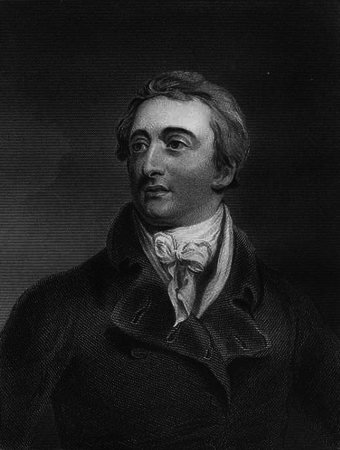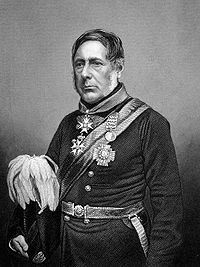
Bentinck, Lord William Cavendish
Governor-General of India (1774-1839)
 Governor-General of India, son of William Henry, third duke of Portland, was born on 14 September 1774. In 1803, he was appointed governor of Madras, but recalled in 1807 in consequence of the sepoy mutiny at Vellore. In 1827, Bentinck succeeded Lord Amherst as Governor-General of India in which capacity he served till 1835.
Governor-General of India, son of William Henry, third duke of Portland, was born on 14 September 1774. In 1803, he was appointed governor of Madras, but recalled in 1807 in consequence of the sepoy mutiny at Vellore. In 1827, Bentinck succeeded Lord Amherst as Governor-General of India in which capacity he served till 1835.
Lord William Bentinck’s policy towards the Sikh kingdom was dictated by the steady growth of a supposed Russo-Persian threat to India’s northwestern frontier. In face of it, the Government of India adopted certain extraordinary measures. In 1830, Alexander Burnes travelled up the River Indus to deliver to Maharaja Ranjit Singh the gift of a team of cart-horses from the King of England to cross with the breeds in the Punjab. His real object in resorting to this riparian mode of journey was to survey the River Indus and its navigavibility and to assess the political and military resources of the amirs of Sindh.
Burnes’ mission was the first step in Lord William Bentinck’s policy of counterpoising the Sikh advance southwards in the
event of a Russian invasion. Out of Burnes’ Memorandum on the Indus and deputy secretary Trevelyan’s Report on the Navigation of the Indus was born the Indus navigation scheme, which in reality aimed at the establishment of British influence in Sindh and the prevention of Sikh advance southwards.
Bentinck’s scheme ostensibly aimed at the opening of the navigation of the Indus to the commerce of India and Europe. The river flowed 150 miles in Sindh, and from its junction with the Punjab rivers northwards of Panjnad, it lay within the territories of Ranjit Singh and his tributary, Bahawalpur. Consequently it was thought essential to enter into agreements with Ranjit Singh, the Daudpotas of Bahawalpur, and the Talpurian amirs of Sindh. The scheme, after a short spurt of commercial activity, was given up. Yet, Bentinck’s recourse to “material utilitarianism” did confer the desired political advantages on the British – the establishment of British political connections with the states and the chiefs of the Indus to the disadvantage of the Sikhs.
Lord William Bentinck’s meeting with Maharaja Ranjit Singh at Ropar in October 1831 had likewise a political purpose. It was meant to be a camouflage to cover British negotiations with the amirs of Sindh and to forestall the Sikh advance on Shikarpur and Sindh. The Ropar meeting is memorable for the display of unparalleled oriental pageantry on both sides, yet its apparent affability was deceptive. Ranjit Singh felt uneasy and expressed a desire to open negotiations with the British government on the subject of his relations with Sindh. He even hinted at a joint Anglo-Sikh enterprise in Sindh, but the Governor-General remained reticent.
Three days earlier, Henry Pottinger had proceeded to the court of the amirs to negotiate a defensive and offensive alliance with them. To lull the apprehensions of the Maharaja, Bentinck gave him a vague written assurance for the continuance of “eternal friendly relations” with the Sikh State.
Source: TheSikhEncyclopedia.Com